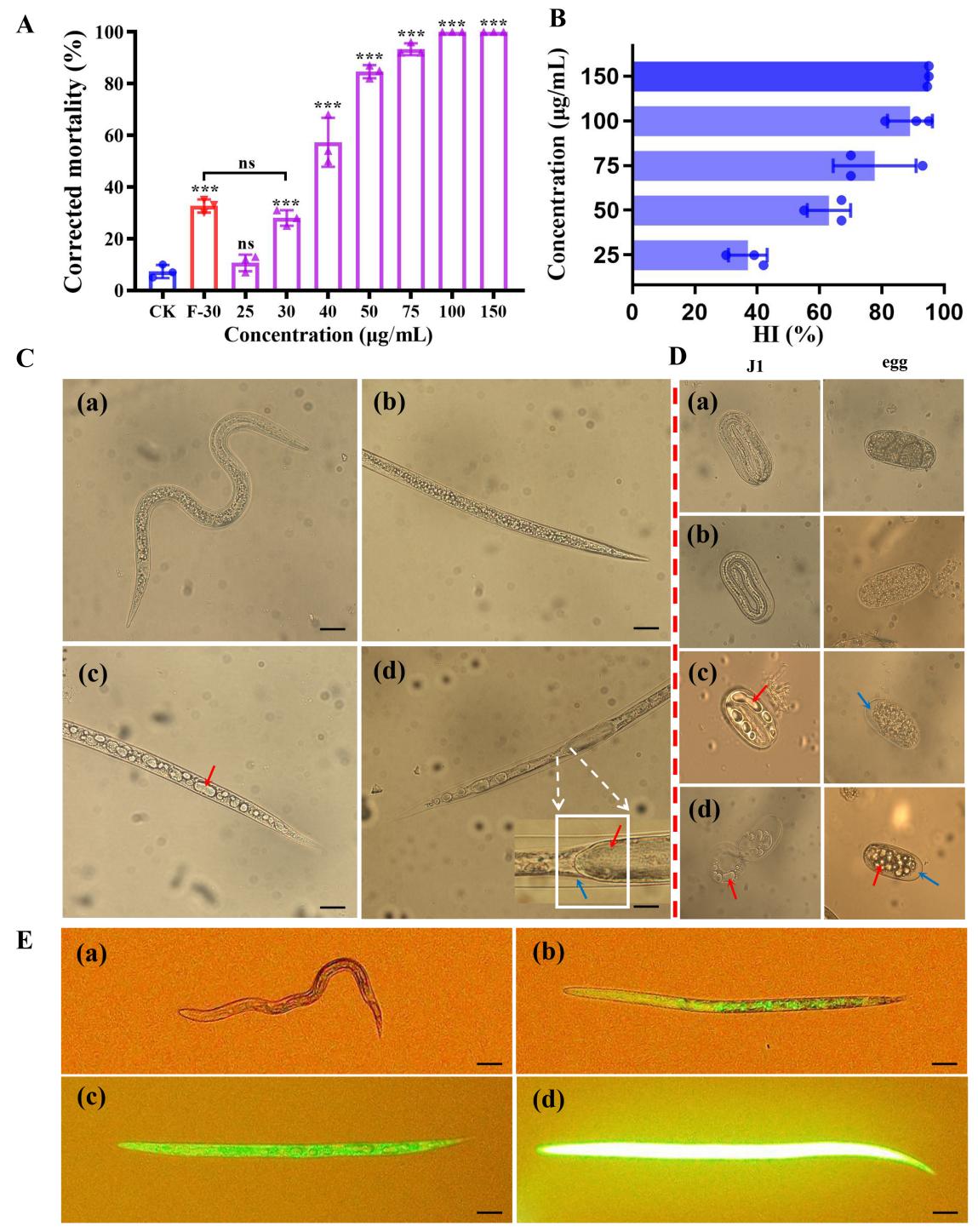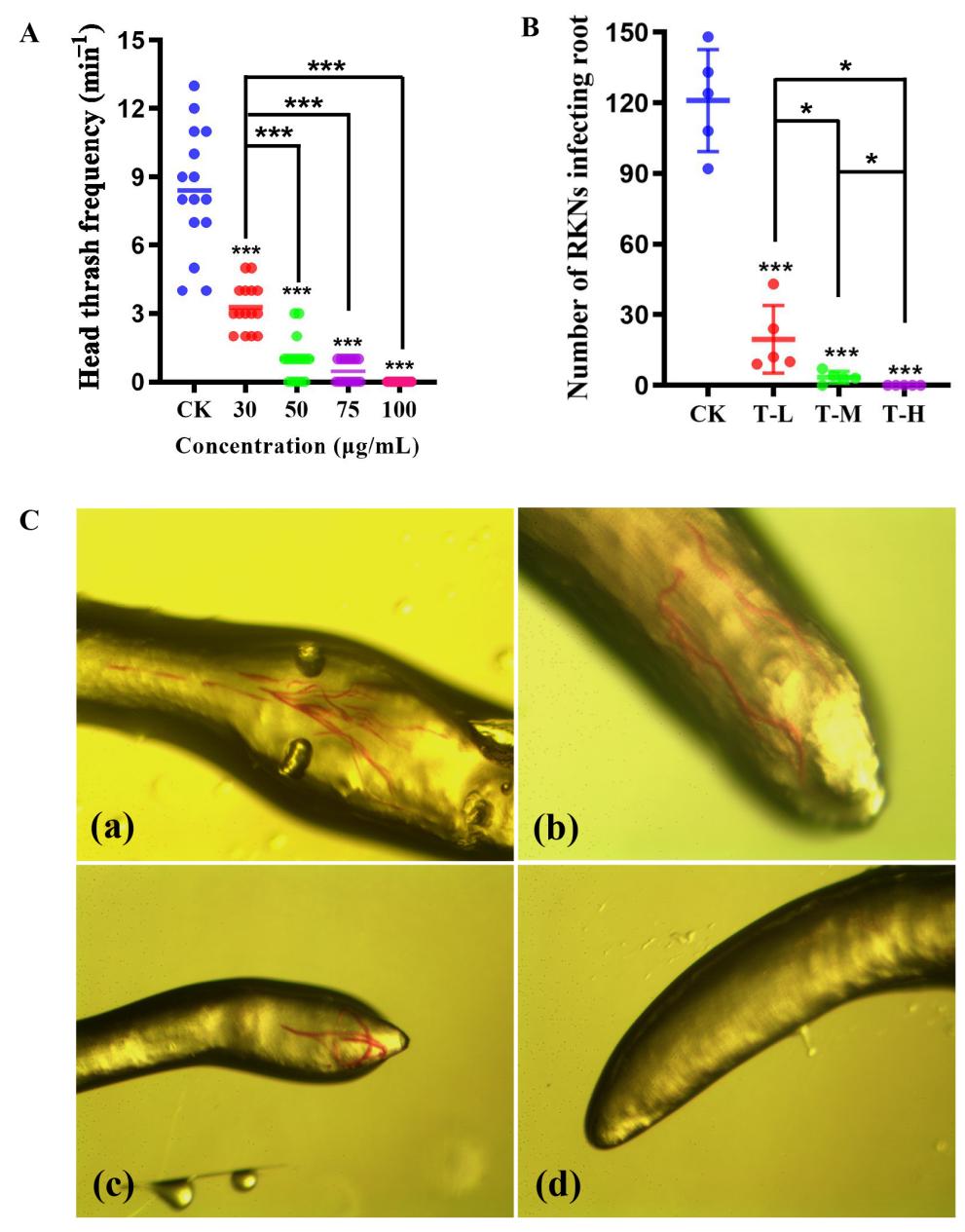Plant-parasitic nematodes (PPNs) pose a great threat to global agriculture, which could cause an estimated annual yield loss of more than $157 billion per year. To replace biohazardous nematicides, there is an ever-increasing need to identify natural product-based agents to contain root-knot nematodes (RKNs) in agriculture, which are equally as effective as traditional nematicides.
Recently, WANG Linsong of Prof. LI Pengcheng's team from the Institute of Oceanology of the Chinese Academy of Sciences (IOCAS) has obtained nematicidal compounds with novel skeleton structure of furyl fragment in a chemo-ecological study, which could serve as a preferable lead structure for novel nematicide research and development.
The study was published in Journal of Agricultural and Food Chemistry on Apr. 11.
Researchers isolated an Aspergillus fumigatus based on the antagonistic interactions in a chemo-ecological study, which could induce the formation of withering of the gut and vacuole-like structures in the nematode body. Based on these typical morphological changes, novel skeleton furyl compound 2-furoic acid was subsequently identified by liquid chromatography-mass spectrometry (LC-MS).
2-Furoic acid showed effective mortality activity in vitro, and continuous 2-furoic acid exposure had obvious negative influences on both nematode vitality and egg hatchability. Notably, the 1T-2 fermentation broth and 2-furoic acid had significant control efficacy on Meloidogyne incognita in vivo under the greenhouse.
"Antagonistic fungi as a natural reservoir of potential agents against RKNs could provide novel insights for future directions for their biocontrol," said WANG Linsong, first author of the study.
"This study provides valuable insights on the use of 2-furoic acid with biocontrol potential as a valuable lead compound for the development of new nematicides for crop protection and would help to exploit the further development of bioactive compounds of Aspergillus fumigatus from the oceans in the future," said Prof. LI.
The research was supported by the National Key R&D Program of China, the National Natural Science Foundation of China, Shandong Provincial Natural Science Foundation, and Qingdao Science and Technology Demonstration and Guidance Project.

Fig. 1 Influence of 2-furoic acid on the reproductive indices and morphology of M. incognita

Fig. 2 Influence of 2-furoic acid on vitality and invasion of M. incognita
Wang L.S., Qin Y.K*., Fan Z.Q., Gao K., Zhan J., Xing R.E., Liu S., Li P.C*. (2022). Novel Lead Compound Discovery from Aspergillus fumigatus 1T-2 against Meloidogyne incognita Based on a Chemical Ecology Study. Journal of Agricultural and Food Chemistry, doi: 10.1021/acs.jafc.1c08147.
WANG Linsong, LI Pengcheng
Institute of Oceanology
E-mail: wanglinsong@qdio.ac.cn; pcli@qdio.ac.cn
(Editor: ZHANG Yiyi)
|
|

Address: 7 Nanhai Road, Qingdao, Shandong 266071, China
Tel: 86-532-82898902 Fax: 86-532-82898612 E-mail: iocas@qdio.ac.cn


